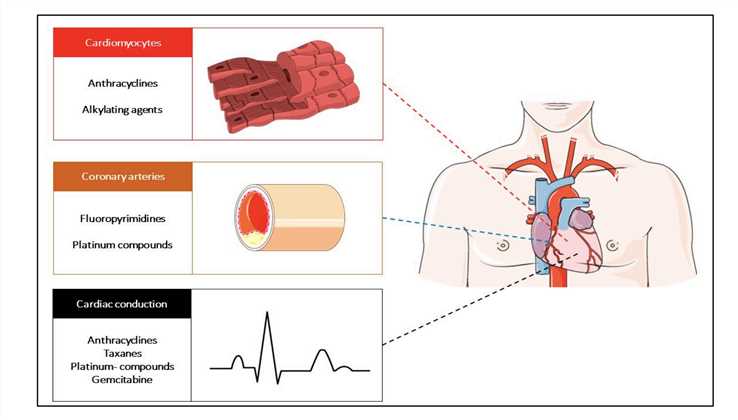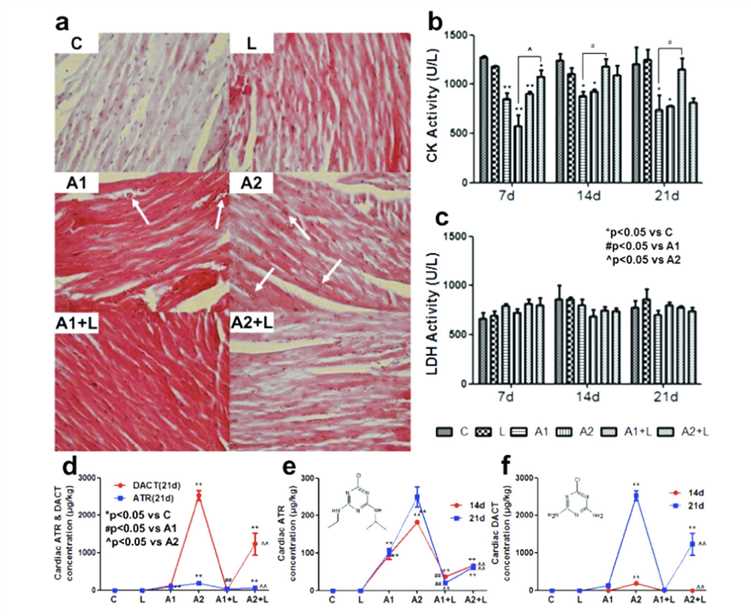Cardiotoxicity Analysis and Prevention Solutions for Anticancer Leads
At Creative Biolabs, recent advancements in cardiotoxicity analysis techniques have offered new opportunities to enhance the safety of anticancer leads. We use advanced technologies, including high-throughput screening, alongside extensive evaluations of cellular and animal models, to achieve an in-depth understanding of the drug's impact on the heart.
Introduction
As a leading CRO in the industry, Creative Biolabs possesses unparalleled expertise in cardiotoxicity analysis. Our analytical services incorporate a variety of cutting-edge technologies, including real-time imaging, cell functionality assessments, and electrophysiological evaluations, allowing us to comprehensively monitor the effects of drugs on the heart. We provide detailed data reports that enable our clients to quickly understand the mechanisms of cardiotoxicity, facilitating the development of new cancer therapy strategies.
 Fig.1 Cardiotoxicity Profiles and the Commonly Used Anticancer Drugs.1,3
Fig.1 Cardiotoxicity Profiles and the Commonly Used Anticancer Drugs.1,3
Services
Currently, cardiotoxicity presents a significant challenge that cannot be overlooked in the development of anti-cancer drugs. Creative Biolabs offers a wide array of preclinical CRO services to assist clients in analyzing, modeling, and removing cardiac toxicity. We will focus on three key areas to ensure that our clients gain unparalleled advantages in their drug development efforts.
Our cardiotoxicity analysis service utilizes cutting-edge technologies to deliver efficient and precise toxicity assessments. By employing high-throughput screening and cellular biology techniques, CBL can thoroughly investigate the specific impacts of compounds on cardiac cells, facilitating the early detection of potential toxicity. Compared to traditional methods, our analyses are more efficient and provide more reliable data. We leverage advanced biomarkers to effectively evaluate the effects of drugs on heart function, empowering our clients to make informed decisions in the early stages and minimize risks during subsequent development phases.
Creative Biolabs provides unique solutions for the development of cardiotoxic animal models. We are focused on providing innovative animal models that accurately reflect human responses. Our models not only replicate the cardiotoxic effects of compounds but also exhibit diverse phenotypic characteristics, allowing clients to conduct customized cardiotoxicity research and analysis. With our comprehensive genomics and metabolomics analyses, you will gain valuable insights to optimize candidate compounds and eliminate future cardiotoxicity issues. We are committed to continuously improving and updating our models, ensuring our clients have access to the latest research findings and practical solutions.
We recognize the key importance of early identification and prevention of cardiotoxicity in the development of anticancer drugs. By integrating novel lead design and intervention strategies, our cardiotoxicity prevention and intervention services provide robust support for your drug development process. We assist clients in identifying and correcting potential cardiotoxicity in compounds while offering suitable adjunctive therapy options to minimize toxicity risks. Our professional interdisciplinary team is equipped to provide immediate feedback during the drug design phase, optimizing compound structures to reduce potential cardiac risks. Through these advanced intervention measures, you can significantly lower the risk of cardiotoxicity during the research phase.
 Fig.2 The Histopathological and Biochemical Analysis in Mouse Heart Models.2,3
Fig.2 The Histopathological and Biochemical Analysis in Mouse Heart Models.2,3
Advantages
To minimize risks in the drug development process, early screening has become essential. Creative Biolabs can establish in vitro and in vivo models to swiftly identify compounds with potential cardiotoxicity. Meanwhile, through comprehensive mechanistic studies, we analyze the effects of anticancer leads on cardiac cells, providing significant data to support subsequent drug design efforts. By integrating various computational biology techniques, we have developed predictive models for cardiotoxicity to optimize the compound performance.
-
Comprehensive Evaluation Capabilities: We provide thorough cardiotoxicity assessments across all stages of anticancer lead development, from candidate screening to preclinical research, including analysis of adverse effects targeting cardiac tissues to identify potential risks early in the discovery process.
-
Cost-Effectiveness: By optimizing research processes and resource allocation, Creative Biolabs offers competitive pricing strategies that help clients reduce R&D expenses and improve their return on investment.
-
Forward-Thinking Research Perspective: Our staff continually monitors discoveries and technological advancements in the field of cardiotoxicity, regularly updating our service offerings to ensure that clients remain the leading of anticancer leads development.
-
Rapid Response and Efficient Communication: Our team can maintain close contact with clients, ensuring transparency in project progress, and providing timely updates on research developments and outcomes, ultimately enhancing customer satisfaction.
-
Compliance and Quality Assurance: Our labs strictly adhere to international standards and regulations, implementing a comprehensive quality management system to ensure that all research aligns with various guidelines, thereby guaranteeing the safety and legality of the data.
Creative Biolabs stays at the forefront of industry trends by integrating the latest research findings and technologies into cardiotoxicity analysis. In the evaluation of cardiotoxicity, we not only focus on the effects of candidate leads but also place significant emphasis on monitoring biomarkers. Our data can help clients make timely adjustments to dosages or substitute compounds to reduce potential risks. By collaborating closely with our clients, we continually refine and enhance our solutions to ensure that we can provide the best support. If you're looking to enhance the safety and efficacy of anticancer lead development, please feel free to contact us at any time.
References
-
Trapani, Dario, et al. "Management of cardiac toxicity induced by chemotherapy." Journal of Clinical Medicine 9.9 (2020): 2885.
-
Lin, Jia, et al. "The chemopreventive potential of lycopene against atrazine-induced cardiotoxicity: modulation of ionic homeostasis." Scientific rReports 6.1 (2016): 24855.
-
Distributed under Open Access license CC BY 4.0, without modification.
For Research Use Only | Not For Clinical Use


 Fig.1 Cardiotoxicity Profiles and the Commonly Used Anticancer Drugs.1,3
Fig.1 Cardiotoxicity Profiles and the Commonly Used Anticancer Drugs.1,3
 Fig.2 The Histopathological and Biochemical Analysis in Mouse Heart Models.2,3
Fig.2 The Histopathological and Biochemical Analysis in Mouse Heart Models.2,3
 Download our brochure
Download our brochure